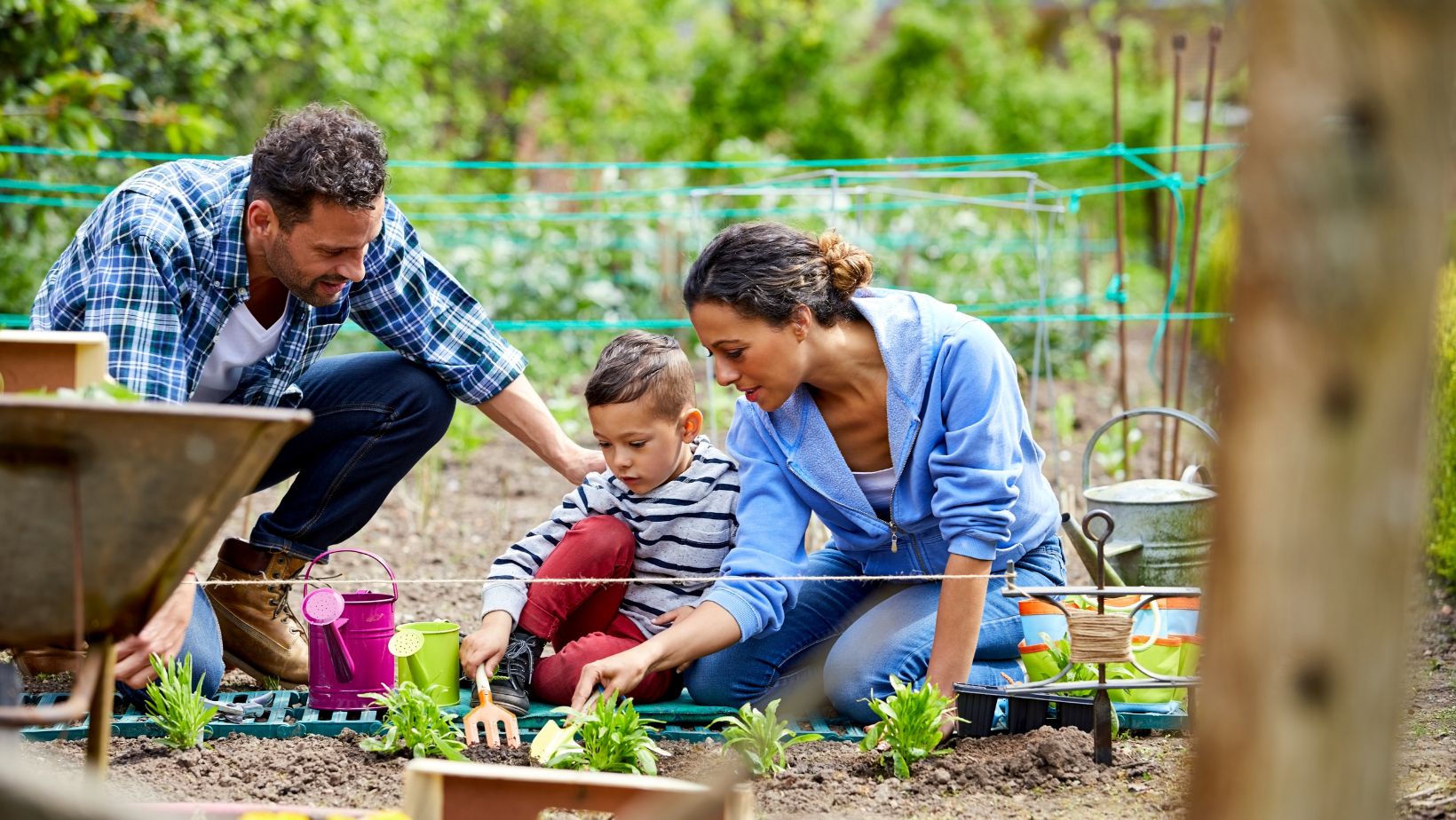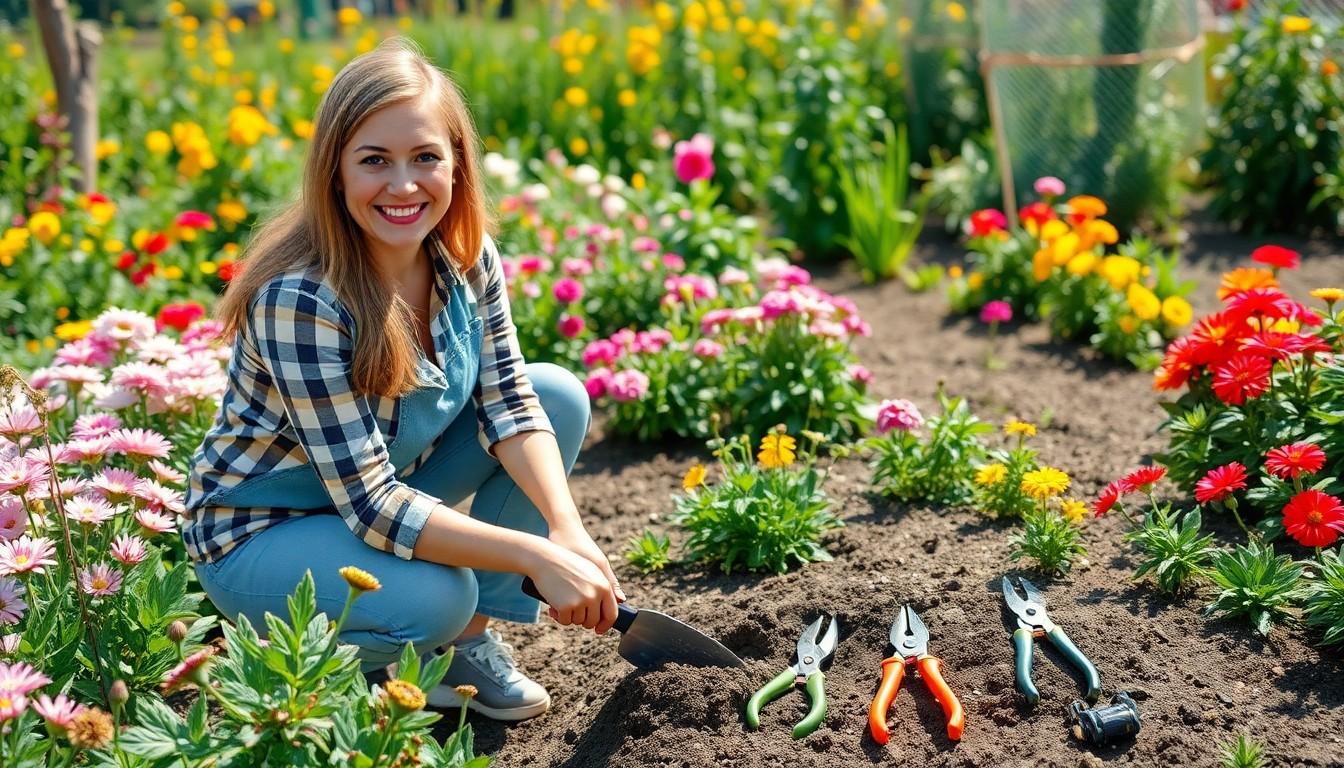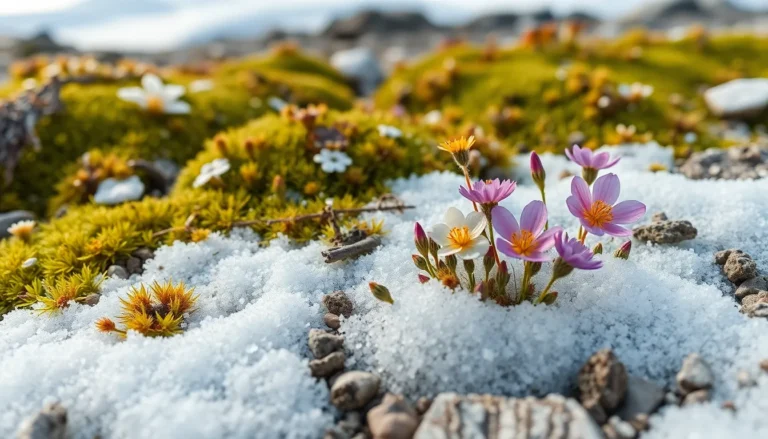
First Time Gardening Tips: Transform Your Backyard Into a Beautiful Oasis
Diving into gardening for the first time can feel a bit like trying to teach a cat to fetch—confusing and slightly chaotic. But fear not! With the right tips, anyone can transform their backyard into a green paradise rather than a jungle of weeds. Whether it’s growing tomatoes that taste like sunshine or flowers that could make a florist weep, every aspiring gardener can find success with a little guidance.
Starting your gardening journey doesn’t require a PhD in botany or an arsenal of fancy tools. It’s all about knowing the basics and having a sense of humor when things don’t go as planned. So grab your gloves, put on that sun hat, and get ready to dig in. With these first-time gardening tips, you’ll be well on your way to impressing friends and family with your newfound green thumb.
First Time Gardening Tips
Gardening may feel overwhelming at first, but grasping the fundamentals ensures success. A variety of factors contribute to a thriving garden, including location and soil quality.
Choosing the Right Location
Selecting an ideal spot is crucial for thriving plants. Sunlight plays a key role; most vegetables and flowers require at least six hours of direct sun daily. Observing the site during different times of the day reveals how sunlight distribution varies. Ensuring good air circulation prevents mold and pests from thriving. Proximity to water sources simplifies maintenance. Accessibility should also be considered, as regularly tending to plants becomes easier in a convenient location.
Assessing Soil Quality
Evaluating the soil quality before planting is essential. Healthy soil supports root growth and nutrient absorption. Performing a simple test, such as a jar test, helps determine soil composition, including sand, silt, and clay ratios. Well-draining soil prevents waterlogging, which can damage plant roots. Testing pH levels ensures compatibility with desired plants. Amending poor soil with organic matter, such as compost, improves structure and nutrient availability. Understanding these aspects lays the foundation for a successful gardening experience.
Essential Tools for Beginners

Equipping oneself with the right tools simplifies gardening tasks for newcomers. Essential tools enhance efficiency, making gardening more enjoyable.
Must-Have Gardening Tools
Begin with a trowel, a versatile tool perfect for digging and transplanting small plants. A hand rake helps in loosening soil and removing debris effectively. Pruning shears offer precise cuts for shaping plants and removing dead parts. Garden gloves protect hands while promoting better grip. Watering cans, especially with a narrow spout, allow controlled watering of delicate plants. Each of these tools plays a key role in establishing a solid gardening practice.
Recommended Gardening Supplies
Mulch serves as a protective layer for soil, helping retain moisture and suppress weeds. Plant labels assist in identifying different plants, promoting better organization in the garden. Fertilizers, both organic and synthetic, enhance plant growth by providing essential nutrients. Compost bins offer a sustainable way to recycle kitchen waste, enriching the soil over time. Lastly, gardening books provide valuable insights and tips tailored for beginners. Each of these supplies supports successful gardening endeavors, ensuring a thriving garden.
Selecting Plants for Your Garden
Selecting the right plants is vital for a successful garden. Aspiring gardeners should consider both annuals and perennials when planning their plots.
Annuals vs. Perennials
Annuals bloom for one growing season and die off after flowering. These plants, like petunias and marigolds, provide vibrant color quickly. In contrast, perennials return year after year, such as daisies and hostas. Varieties like these require more initial planning but offer long-term rewards. Choosing a mix of both can ensure continuous blooms and garden interest throughout the seasons.
Best Plants for Beginners
Beginners benefit from low-maintenance plants that thrive in various conditions. Herbs like basil and mint are easy to grow and useful in the kitchen. Vegetables such as lettuce and radishes also adapt well to novice gardeners. Additionally, flowers like zinnias and sunflowers provide bright accents without requiring advanced skills. Selecting resilient species helps boost confidence while fostering enjoyment in gardening.
Developing a Gardening Plan
A well-thought-out gardening plan sets the stage for success. It guides every aspect of creating a flourishing garden.
Creating a Garden Layout
Begin by sketching the garden’s layout on paper. Identify sunlight and shade areas, placing taller plants, such as sunflowers, toward the back. Consider leaving space for walking paths to provide access for maintenance. Group plants with similar watering and sunlight needs together to simplify care. This approach enhances overall growth and reduces stress on the plants. As the layout develops, visualize how colors and textures combine, creating an inviting atmosphere.
Establishing a Planting Schedule
Start by determining the last frost date for your area to guide planting times. Mark early spring for cool-season crops like lettuce and spinach, while warm-season vegetables, such as tomatoes and peppers, thrive after the last frost. Each plant has specific growing requirements, so researching individual needs ensures optimal success. Regularly monitor growth progress to adjust care as needed. Keeping a journal of planting dates and observations streamlines future gardening efforts.
Maintaining Your Garden
Maintaining a garden involves consistent attention to watering and pest control. Careful practices lead to thriving plants and a successful gardening experience.
Watering Techniques
Watering techniques play a significant role in plant health. Most plants prefer deep watering sessions, allowing moisture to penetrate the soil and reach root systems. Frequency varies based on the season; typically, gardens need watering two to three times per week during dry spells. Early morning is the ideal time to water, reducing evaporation and fungal risks. It’s crucial to observe soil moisture; if the top inch feels dry, it’s time to water. Overwatering leads to root rot, so ensuring proper drainage is essential.
Pest Control Strategies
Pest control strategies are vital for protecting garden growth. Natural solutions often yield the best results. Beneficial insects, like ladybugs and lacewings, help manage pest populations. Organic methods include neem oil sprays and diatomaceous earth, which disrupt pests without harming plants. Regularly inspecting plants can catch infestations early. Crop rotation also reduces pest build-up over seasons, promoting healthier plants. Lastly, maintaining good garden hygiene, such as removing debris, helps prevent pest problems before they start.
Gardening is a journey filled with learning and growth. By embracing the basics and maintaining a positive attitude, first-time gardeners can transform their spaces into vibrant havens. Each step taken—from selecting the right plants to maintaining soil quality—contributes to a flourishing garden.
Equipping oneself with essential tools and developing a thoughtful gardening plan lays the groundwork for success. With patience and persistence, the rewards of gardening become evident. A beautiful garden not only enhances outdoor spaces but also fosters a deeper connection with nature. As they embark on this rewarding adventure, beginners should remember that every garden tells a unique story.



